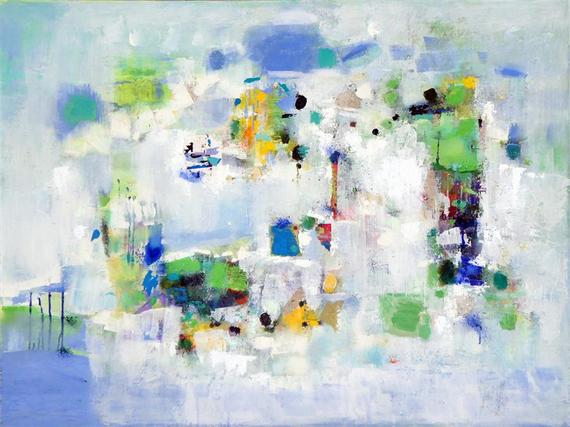Changsoon Oh's "Seoul." Still from UGallery.
Buying artwork can be scary.
Many think art -- particularly original art -- is prohibitively expensive because they hear about the multimillion-dollar auction results at Christie's or get blindsided by the number of zeros on the wall at their local galleries. As a result, they don't buy.
This notion of "art intimidation" is very real, and has been for years, as the art culture can be seen as a private club, only accessible to deep-pocketed collectors with thick wallets. This perception persists -- and we now have data to confirm it.
To more deeply understand art intimidation in the U.S., my company, UGallery, commissioned a 500-person study to see how buying art is perceived today. Here's what we found.
Many people think...
It's Too Pricey
The study revealed that nearly 70 percent of people have never purchased artwork for their home, with almost 50 percent (!) citing cost as the main barrier to buying.
It's Intimidating
20 percent found buying art from a gallery to be the most intimidating shopping experience of all, more so than shopping for real estate or an expensive car.
What Would Help?
When asked what would make them more comfortable buying art -- because this is the real goal, to make artwork accessible for everyone -- 36 percent named an "easy, money-back return policy," 30 percent want to better understand the background of the artist, and 25 percent cite a "virtual way to look at the art on their walls."
Notice a common thread here? These wants -- easy return policy, information and research on the product, a try-before-you-buy option -- they all are common characteristics of a typical ecommerce company, hence the rise in online art galleries.
Online art is booming, with over 300 web-based art ventures having launched in recent years and at least 71 percent of collectors having now purchased artwork online. Online galleries offer tools and features that fundamentally increase comfort levels when buying art.
The ecommerce model allows a gallery to represent more artists, meaning bigger inventories and a more varied collection, with different price points for any budget or buyer. Curated galleries, in particular, provide confidence in the quality of art because each artist and piece has already been vetted by a team of experts.
Clearly, according to our survey, that's hugely important when considering art.
---
So, while art has traditionally been an intimidating area, online art galleries are helping address that, head-on, opening up a previously closed channel and bringing "art to the people" in a more personal, accessible and approachable way. As we see more embrace it, barriers to entry are beginning to fade -- and that's a good thing.
What about you -- have you ever bought art? If not, what's holding you back?

